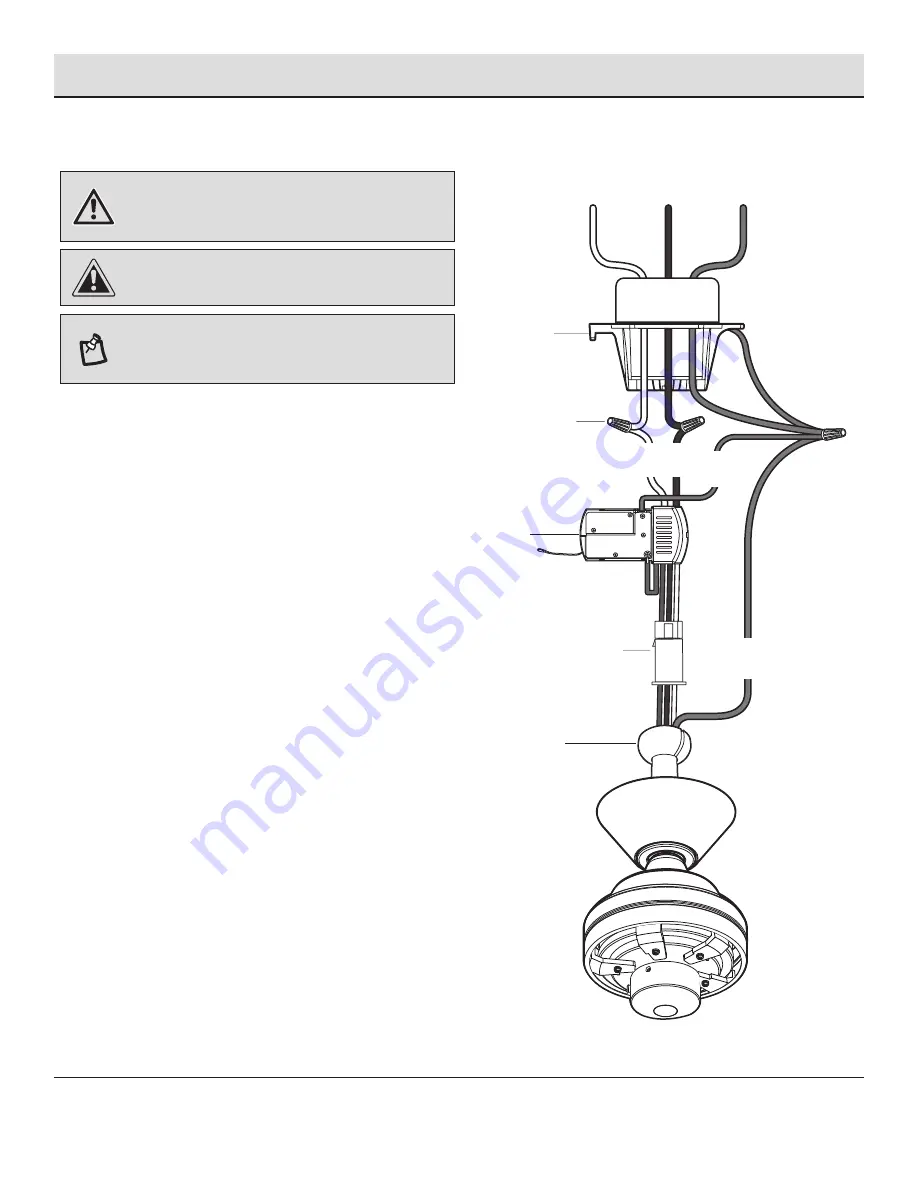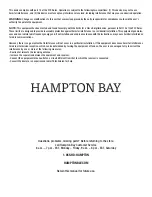
Assembly — Hanging the Fan (continued)
6
Making the electrical connections
9
HAMPTONBAY.COM
Please contact 1-855-HD-HAMPTON for further assistance.
WARNING:
Check to see that all connections are tight,
including ground, and that no bare wire is visible at the wire
nuts, except for the ground wire.
NOTE:
The fan must be installed at a maximum distance of
20 ft. from the remote control for proper signal transmission
between the remote control and the fan's receiving unit.
CAUTION:
To reduce the risk of electric shock, this fan
must be installed with an isolating wall control/switch.
If you feel you do not have enough electrical wiring knowledge
or experience, have your fan installed by a licensed electrician.
Follow the steps below to connect the fan to your household
wiring. Use the plastic wire nuts (AA) with your fan. Secure
the plastic wire nuts (AA) with electrical tape. Make sure
there are no loose strands or connections.
□
Insert the receiver (I) into the mounting bracket (A) with
the flat side of the receiver (I) facing the ceiling.
□
Make wire connections from the fan to the receiver (I).
From fan To receiver
3-pin connector--------------- 3-pin connector
□
Make wire connections from the receiver (I) and fan to
the outlet box as follows, using the wire nuts (AA).
From receiver To outlet box
Black wire "AC in L" ---------- Black wire (hot)
White wire "AC in N" --------- White wire (neutral)
From fan and receiver To outlet box
Green wires* ---------------- Green or bare wire (ground)
* There are three green grounding leads: one from the mounting
bracket (A), one from the hanger ball/downrod assembly (D)
and one from the receiver
(I)
.
□
Turn the wire nut connections upward, spreading them
apart so the green (ground) and white wires will be on
one side of the outlet box and the black wire will be on
the other side. Carefully tuck the connections up into
the outlet box.
AA
I
White
Green
Black
Black
Ground
White
conductor
Outlet Box
D
A
3-pin
connector
Green



































